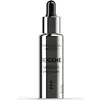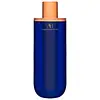What's inside
What's inside
 Key Ingredients
Key Ingredients

 Benefits
Benefits

 Concerns
Concerns

 Ingredients Side-by-side
Ingredients Side-by-side

Betula Alba Juice
AstringentGlycerin
HumectantCoconut Alkanes
EmollientCetearyl Alcohol
EmollientSimmondsia Chinensis Seed Oil
EmollientGlyceryl Stearate Citrate
EmollientBorago Officinalis Seed Oil
EmollientCaprylic/Capric Triglyceride
MaskingDipalmitoyl Hydroxyproline
Skin ConditioningEuphrasia Officinalis Extract
AntimicrobialRicinus Communis Seed Oil
MaskingSodium PCA
HumectantWater
Skin ConditioningCamellia Sinensis Leaf Extract
AntimicrobialUsnea Barbata Extract
Xylitylglucoside
HumectantCI 77891
Cosmetic ColorantMica
Cosmetic ColorantAnhydroxylitol
HumectantAroma
Cellulose
AbsorbentRhus Verniciflua Peel Cera
EmollientXanthan Gum
EmulsifyingAesculus Hippocastanum Seed Extract
Skin ConditioningXylitol
HumectantTrifolium Pratense Flower Extract
AstringentAscorbyl Palmitate
AntioxidantTocopherol
AntioxidantHydrolyzed Hyaluronic Acid
HumectantSodium Hyaluronate
HumectantPotassium Hydroxide
BufferingSodium Phytate
Ginkgo Biloba Leaf Extract
Skin ConditioningCitric Acid
BufferingSodium Benzoate
MaskingPotassium Sorbate
PreservativeBetula Alba Juice, Glycerin, Coconut Alkanes, Cetearyl Alcohol, Simmondsia Chinensis Seed Oil, Glyceryl Stearate Citrate, Borago Officinalis Seed Oil, Caprylic/Capric Triglyceride, Dipalmitoyl Hydroxyproline, Euphrasia Officinalis Extract, Ricinus Communis Seed Oil, Sodium PCA, Water, Camellia Sinensis Leaf Extract, Usnea Barbata Extract, Xylitylglucoside, CI 77891, Mica, Anhydroxylitol, Aroma, Cellulose, Rhus Verniciflua Peel Cera, Xanthan Gum, Aesculus Hippocastanum Seed Extract, Xylitol, Trifolium Pratense Flower Extract, Ascorbyl Palmitate, Tocopherol, Hydrolyzed Hyaluronic Acid, Sodium Hyaluronate, Potassium Hydroxide, Sodium Phytate, Ginkgo Biloba Leaf Extract, Citric Acid, Sodium Benzoate, Potassium Sorbate
Water
Skin ConditioningGlycerin
Humectant1,2-Hexanediol
Skin ConditioningCellulose
AbsorbentEthylhexyl Polyhydroxystearate
EmollientResveratrol
AntioxidantSqualane
EmollientSodium Acrylates Copolymer
Ascorbyl Tetraisopalmitate
AntioxidantOryza Sativa Bran Oil
EmollientMaltitol
HumectantLeontopodium Alpinum Callus Culture Extract
AntioxidantXylitylglucoside
HumectantLecithin
EmollientAnhydroxylitol
HumectantCitric Acid
BufferingXylitol
HumectantHydrolyzed Rice Protein
Skin ConditioningMaltodextrin
AbsorbentSodium Hyaluronate
HumectantSodium Hydroxide
BufferingO-Cymen-5-Ol
AntimicrobialPunica Granatum Extract
AstringentSodium Phytate
Glucose
HumectantXanthan Gum
EmulsifyingCamellia Sinensis Leaf Extract
AntimicrobialHydrogenated Lecithin
EmulsifyingTocopheryl Acetate
AntioxidantAlanyl Glutamine
HumectantArginine
MaskingOligopeptide-177
Potassium Sorbate
PreservativeSodium Chloride
MaskingPhenylalanine
MaskingSisymbrium Irio Seed Oil
MaskingWater, Glycerin, 1,2-Hexanediol, Cellulose, Ethylhexyl Polyhydroxystearate, Resveratrol, Squalane, Sodium Acrylates Copolymer, Ascorbyl Tetraisopalmitate, Oryza Sativa Bran Oil, Maltitol, Leontopodium Alpinum Callus Culture Extract, Xylitylglucoside, Lecithin, Anhydroxylitol, Citric Acid, Xylitol, Hydrolyzed Rice Protein, Maltodextrin, Sodium Hyaluronate, Sodium Hydroxide, O-Cymen-5-Ol, Punica Granatum Extract, Sodium Phytate, Glucose, Xanthan Gum, Camellia Sinensis Leaf Extract, Hydrogenated Lecithin, Tocopheryl Acetate, Alanyl Glutamine, Arginine, Oligopeptide-177, Potassium Sorbate, Sodium Chloride, Phenylalanine, Sisymbrium Irio Seed Oil
 Reviews
Reviews

Ingredients Explained
These ingredients are found in both products.
Ingredients higher up in an ingredient list are typically present in a larger amount.
This ingredient is created from dehydrating xylitol in acidic conditions. Xylitol is a famous sugar and humectant.
Much like its predecessor, anhydroxylitol is a humectant. Humectants attract and hold water to moisturize the skin.
This ingredient is most commonly found in a popular trio called Aquaxyl. Aquaxyl is made up of anhydroxylitol (24 - 34%), xylitylglucoside (35 - 50%), and xylitol (5 - 15%).
According to a manufacturer, Aquaxyl is known for a 3-D hydration concept and an anti-dehydration shield to reinforce the outer layer of skin.
This ingredient is often derived from plants such as wood and sugarcane.
Learn more about AnhydroxylitolCamellia Sinensis Leaf Extract is derived from the leaves of the tea plant. Black tea, green tea, and oolong tea are all harvested from this plant.
This ingredient has many skin benefits:
This ingredient contains polyphenols, a strong antioxidant. Antioxidants help fight off molecules that damage skin cells.
On top of that, the antioxidants in green tea neutralize free-radicals from the sun. This gives the skin some extra UV protection, but should not replace sunscreen.
Many components of tea have anti-inflammatory properties.
Polyphenols and L-theanine help soothe the skin and reduce irritation. The caffeine in Camellia Sinensis Leaf Extract helps calm inflamed blood vessels.
Other compounds found in tea include: Vitamin Bs, linoleic acid, magnesium, calcium, iron, and zinc.
Research has shown both drinking Camellia Sinensis Leaf Tea and applying it to the skin can help boost skin elasticity and hydration. Studies also show using tea extract may reduce sebum, or oil, production.
Learn more about Camellia Sinensis Leaf ExtractCellulose is the main component of plant cell walls. It is used as an emulsifier, absorbent, and texture enhancer.
This ingredient has many functions:
Fun fact: Cellulose is the most abundant form of organic polymer on Earth.
Learn more about CelluloseCitric Acid is an alpha hydroxy acid (AHA) naturally found in citrus fruits like oranges, lemons, and limes.
Like other AHAs, citric acid can exfoliate skin by breaking down the bonds that hold dead skin cells together. This helps reveal smoother and brighter skin underneath.
However, this exfoliating effect only happens at high concentrations (20%) which can be hard to find in cosmetic products.
Due to this, citric acid is usually included in small amounts as a pH adjuster. This helps keep products slightly more acidic and compatible with skin's natural pH.
In skincare formulas, citric acid can:
While it can provide some skin benefits, research shows lactic acid and glycolic acid are generally more effective and less irritating exfoliants.
Most citric acid used in skincare today is made by fermenting sugars (usually from molasses). This synthetic version is identical to the natural citrus form but easier to stabilize and use in formulations.
Read more about some other popular AHA's here:
Learn more about Citric AcidGlycerin is already naturally found in your skin. It helps moisturize and protect your skin.
A study from 2016 found glycerin to be more effective as a humectant than AHAs and hyaluronic acid.
As a humectant, it helps the skin stay hydrated by pulling moisture to your skin. The low molecular weight of glycerin allows it to pull moisture into the deeper layers of your skin.
Hydrated skin improves your skin barrier; Your skin barrier helps protect against irritants and bacteria.
Glycerin has also been found to have antimicrobial and antiviral properties. Due to these properties, glycerin is often used in wound and burn treatments.
In cosmetics, glycerin is usually derived from plants such as soybean or palm. However, it can also be sourced from animals, such as tallow or animal fat.
This ingredient is organic, colorless, odorless, and non-toxic.
Glycerin is the name for this ingredient in American English. British English uses Glycerol/Glycerine.
Learn more about GlycerinPotassium Sorbate is a preservative used to prevent yeast and mold in products. It is commonly found in both cosmetic and food products.
This ingredient comes from potassium salt derived from sorbic acid. Sorbic acid is a natural antibiotic and effective against fungus.
Both potassium sorbate and sorbic acid can be found in baked goods, cheeses, dried meats, dried fruit, ice cream, pickles, wine, yogurt, and more.
You'll often find this ingredient used with other preservatives.
Learn more about Potassium SorbateSodium Hyaluronate is hyaluronic acid's salt form. It is commonly derived from the sodium salt of hyaluronic acid.
Like hyaluronic acid, it is great at holding water and acts as a humectant. This makes it a great skin hydrating ingredient.
Sodium Hyaluronate is naturally occurring in our bodies and is mostly found in eye fluid and joints.
These are some other common types of Hyaluronic Acid:
Learn more about Sodium HyaluronateSodium Phytate is the synthetic salt form of phytic acid. Phytic acid is an antioxidant and can be found in plant seeds.
Sodium Phytate is a chelating agent. Chelating agents help prevent metals from binding to water. This helps stabilize the ingredients and the product.
Water. It's the most common cosmetic ingredient of all. You'll usually see it at the top of ingredient lists, meaning that it makes up the largest part of the product.
So why is it so popular? Water most often acts as a solvent - this means that it helps dissolve other ingredients into the formulation.
You'll also recognize water as that liquid we all need to stay alive. If you see this, drink a glass of water. Stay hydrated!
Learn more about WaterXanthan gum is used as a stabilizer and thickener within cosmetic products. It helps give products a sticky, thick feeling - preventing them from being too runny.
On the technical side of things, xanthan gum is a polysaccharide - a combination consisting of multiple sugar molecules bonded together.
Xanthan gum is a pretty common and great ingredient. It is a natural, non-toxic, non-irritating ingredient that is also commonly used in food products.
Learn more about Xanthan GumXylitol is a humectant and prebiotic. It can help with dry skin.
In studies, xylitol has been shown to improve dry skin. It decreased transepidermal water loss, or when water passes through the skin and evaporates. Xylitol also showed to help improve the biomechanical properties of the skin barrier.
The prebiotic property of xylitol may also help reinforce our skin's natural microbiome. Having a healthy microbiome prevents infection by bad bacteria and helps with hydration.
As a humectant, Xylitol helps draw moisture from both the air and from deeper skin layers. This helps keep skin hydrated.
Xylitol is a sugar alcohol and commonly used as a sugar substitute. It is naturally occurring in plants such as strawberries and pumpkin.
Learn more about XylitolXylitylglucoside is created from xylitol and glucose, two humectants.
Not surprisingly, this ingredient is also a humectant. It attracts and holds water in your skin, helping to maintain hydration.
This ingredient is most commonly found in a popular trio called Aquaxyl. Aquaxyl is made up of anhydroxylitol(24 - 34%), xylitylglucoside (35 - 50%), and xylitol (5 - 15%).
According to a manufacturer, Aquaxyl is known for a 3-D hydration concept and an anti-dehydration shield to reinforce the outer layer of skin.
Learn more about Xylitylglucoside